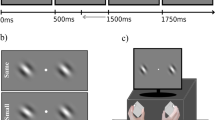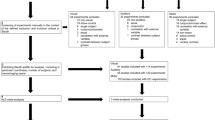Abstract.
Sensory and motor systems interact in complex ways; visual attention modifies behavior, neural encoding, and brain activation; and dividing attention with simultaneous tasks may impede performance while producing specific brain activation patterns. We hypothesized that combining voluntary movement with visual attention would yield unique brain representations differing from those occurring for movement or visual attention alone. Hemodynamic signals in humans were obtained with functional magnetic resonance imaging (MRI) while participants performed one of four tasks that required only a repetitive finger movement, only attending to the color of a visual stimulus, simultaneous finger movement and visual attention, or no movement and no visual attention. The movement-alone task yielded brain activation in structures commonly engaged during voluntary movement, including the primary motor cortex, supplementary motor area, and cerebellum. Visual attention alone resulted in sparse cerebral cortical and substantial bilateral cerebellar activation. Simultaneous performance of visual attention and finger movements yielded widespread cerebral cortical, cerebellar, and other subcortical activation, in many of the same sites activated for the movement or attention tasks. However, the movement-related plus attention-related activation extended beyond the movement-alone or attention-alone activation sites, indicating a novel activation pattern related to the combined performance of attention and movement. Additionally, the conjoint effects of visual attention and movement upon brain activation were probably not simple gain effects, since we found activation-related interactions in the left superior parietal lobule, the right fusiform gyrus, and left insula, indicating a potent combinatory role for visual attention and movement for activation patterns in the human brain. In conclusion, performing visual attention and movement tasks simultaneously, even though the tasks had no specific interrelationship, resulted in novel activation patterns not predicted by performing movements or visual attention alone.
Similar content being viewed by others
Author information
Authors and Affiliations
Additional information
Electronic Publication
Rights and permissions
About this article
Cite this article
Indovina, I., Sanes, J.N. Combined visual attention and finger movement effects on human brain representations. Exp Brain Res 140, 265–279 (2001). https://doi.org/10.1007/s002210100796
Received:
Accepted:
Issue Date:
DOI: https://doi.org/10.1007/s002210100796




